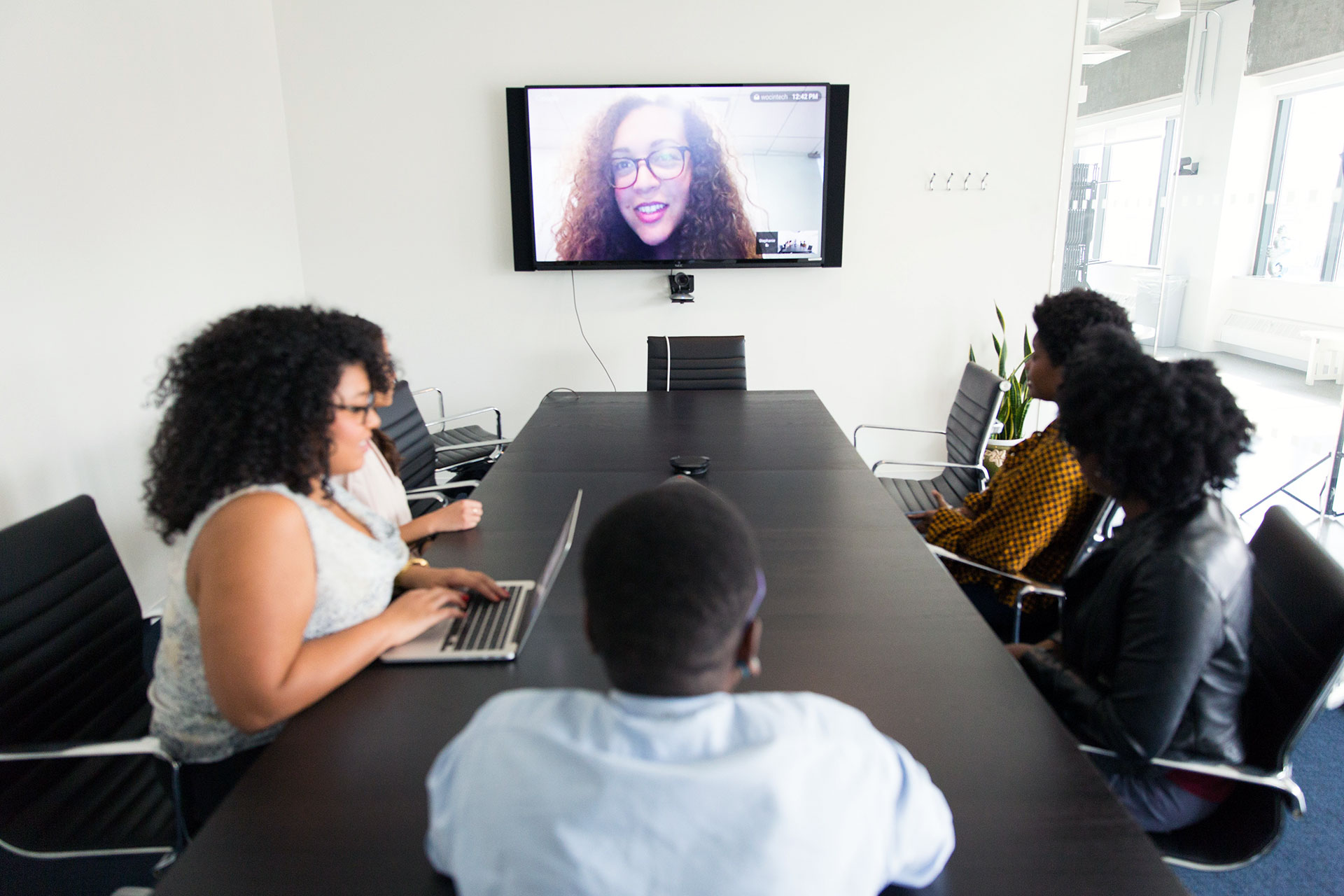How to Keep Unwanted Guests Out of Your Webinar
The rise of remote work and online collaboration has made virtual meetings an essential part of professional and personal communication. However, it has also opened the door to an increasing number of online disruptions, commonly known as "meeting bombing."
At some point, someone somewhere must have thought, "Hey guys, you can just drop in on other people's meetings." And now, we’re seeing a surge in unwanted guests disrupting video calls, often with offensive behaviour, loud noises, or inappropriate content.
So, how can you protect your online meetings from these digital intruders? This guide outlines the best security measures to keep your video conferences safe and professional.
Table of contents
- Privacy settings
- Waiting rooms and lobbies
- Broadcasting permissions
- Password-protected access
- What if someone still gets in?
- Conclusion
1. The first line of defence: privacy settings
One of the most common ways trolls gain access to meetings is through publicly available links. If your meeting link is shared on social media or listed in a public directory, unwanted guests can easily find and join the session. Once inside, they may cause disruptions by playing loud sounds, sharing inappropriate content, or harassing participants.
To prevent this, keeping your meeting links private and only accessible to intended participants is crucial. A well-protected meeting ensures that only invited guests can join, minimising the risk of disruptions and maintaining a secure virtual environment.
Best practices:
-
Use invite-only links: Generate unique invitation links for each participant. This ensures that only those with the link can access the meeting.
-
Disable the option for users to join before the host: Prevent unauthorised users from entering the meeting room before the organiser arrives. This feature helps ensure that all attendees are legitimate.
-
Avoid posting meeting links on public forums or social media: Sharing links in public spaces increases the chances of trolls discovering and joining your meeting. Instead, distribute links through private emails or direct messages.
-
Enable encryption for added security: Many modern video conferencing platforms offer end-to-end encryption, ensuring that all communication within the meeting remains private and protected from external interference.
-
Use domain-based restrictions: Some platforms allow hosts to restrict access based on email domains, meaning only users with approved company emails can join.
-
Automatically generate unique meeting IDs: Instead of using a static meeting link, opt for a dynamically generated ID that changes for every session, reducing the likelihood of repeat intrusions.
Implementing these measures significantly strengthens your meeting’s security and deters unauthorised access, creating a safer and more controlled virtual environment.
2. The second line of defence: waiting rooms and lobbies
A waiting room or lobby acts as a security checkpoint where hosts can manually approve attendees before granting them access to the main session. This feature prevents random users from immediately joining and disrupting a meeting, ensuring a safer environment for all participants.
How it helps:
-
Provides a layer of screening for incoming participants: Hosts can see a list of waiting attendees and manually approve or deny access before they join the main session.
-
Prevents random users from immediately disrupting the session: Without approval, unauthorised participants remain in the waiting room rather than gaining instant access.
-
Gives hosts time to verify participant identities: Hosts can cross-check attendees against an invite list, ensuring that only authorised individuals enter the meeting.
-
Adds an extra layer of control: Even if a meeting link is shared publicly, the waiting room feature prevents automatic entry, allowing hosts to filter out uninvited guests.
-
Customisable messages: Some platforms allow hosts to display messages in the waiting room, providing participants with instructions or expectations before they enter the meeting.
Best practices:
-
Always enable the waiting room for large meetings, particularly public events or webinars.
-
Appoint a co-host or moderator to manage the waiting room, ensuring efficient approval of legitimate attendees.
-
If possible, pre-approve participants from a guest list to streamline access.
-
Regularly check the waiting room during the meeting to manage late joiners while keeping disruptions to a minimum.
Using this feature is like having a bouncer outside a nightclub – only authorised guests get in, ensuring that your virtual meeting remains productive and free from disruptions.
3. The third line of defence: broadcasting permissions
Not all participants need broadcasting capabilities. Restricting who can share their screen, use their microphone, or post in chat reduces the risk of disruptions and maintains the integrity of your meeting.
How it helps:
-
Prevents unwanted interruptions: If only approved participants can use their microphone or camera, trolls have fewer ways to disrupt the session.
-
Reduces risks of offensive or inappropriate content: Screen sharing restrictions ensure that only trusted users can present materials to the group.
-
Improves overall meeting experience: Keeping unnecessary noise and interruptions to a minimum allows for more effective communication.
-
Gives moderators greater control: Hosts can selectively grant broadcasting privileges when needed.
Best practices:
-
Set attendees to “listen-only” mode by default: This prevents unapproved users from speaking unless given permission by the host.
-
Restrict screen sharing to hosts or designated presenters: This minimises the risk of inappropriate or disruptive content being displayed.
-
Enable chat moderation to prevent offensive messages: Use automatic filters or require approval before messages are visible to the group.
-
Implement role-based access: Assign different roles (e.g., host, presenter, attendee) to control permissions dynamically.
-
Allow hosts to revoke broadcasting permissions instantly: If someone becomes disruptive, they can be muted or removed without affecting the entire session.
By implementing these broadcasting restrictions, even if an unwanted guest gains access, their ability to disrupt the meeting is significantly reduced.
4. The last line of defence: password-protected access
Adding a password to your meeting makes it harder for trolls to enter. While this can make it slightly more inconvenient for attendees, it significantly reduces the risk of unauthorised access.
How it helps:
-
Acts as a gatekeeper: Only those who have received the correct password can access the meeting.
-
Dissuades opportunistic trolls: A password-protected meeting is less appealing to trolls who seek easy targets.
-
Enhances overall security when combined with other measures: A password in conjunction with waiting rooms and controlled broadcasting permissions provides robust protection.
Additional security measures:
-
Use unique passwords for each session: This prevents previously shared passwords from being exploited.
-
Avoid using easily guessable passwords: Opt for strong passwords with a mix of letters, numbers, and symbols instead of generic ones like "123456" or "password."
-
Enable multi-factor authentication (MFA): Require a second verification step, such as an email or SMS code, for added security.
-
Set expiry times for passwords: Some platforms allow you to set passwords that expire after a session ends or a set time frame, preventing future misuse.
What if someone still gets in?
Despite all precautions, persistent trolls may still find their way into your meeting. In such cases:
-
Immediately mute or remove the intruder using the platform’s moderation tools to prevent further disruptions.
-
Ban disruptive users permanently if the platform supports it, ensuring they cannot return in future sessions.
-
Lock the meeting after all participants have joined to prevent additional intruders from entering.
-
Limit participant interactions by disabling their video, chat, or screen-sharing capabilities if necessary.
-
Report repeat offenders to your video conferencing provider, as many platforms track and take action against disruptive users.
Conclusion
Maintaining a secure virtual meeting environment requires a combination of privacy settings, participant screening, restricted broadcasting permissions, and password-protected access. By implementing these strategies, you can ensure a safe and productive video conferencing experience.
Digital Samba’s video conferencing API and SDK provide built-in security features, including password protection, waiting rooms, and advanced moderator controls, to keep your virtual meetings secure. Contact our sales team today to learn how Digital Samba can enhance your online meeting experience.
Share this
You May Also Like
These Related Stories

Transform Your Meeting Culture with Video Conferencing Solutions

Ensuring Video Conferencing Security: Risks, and Best Practices

